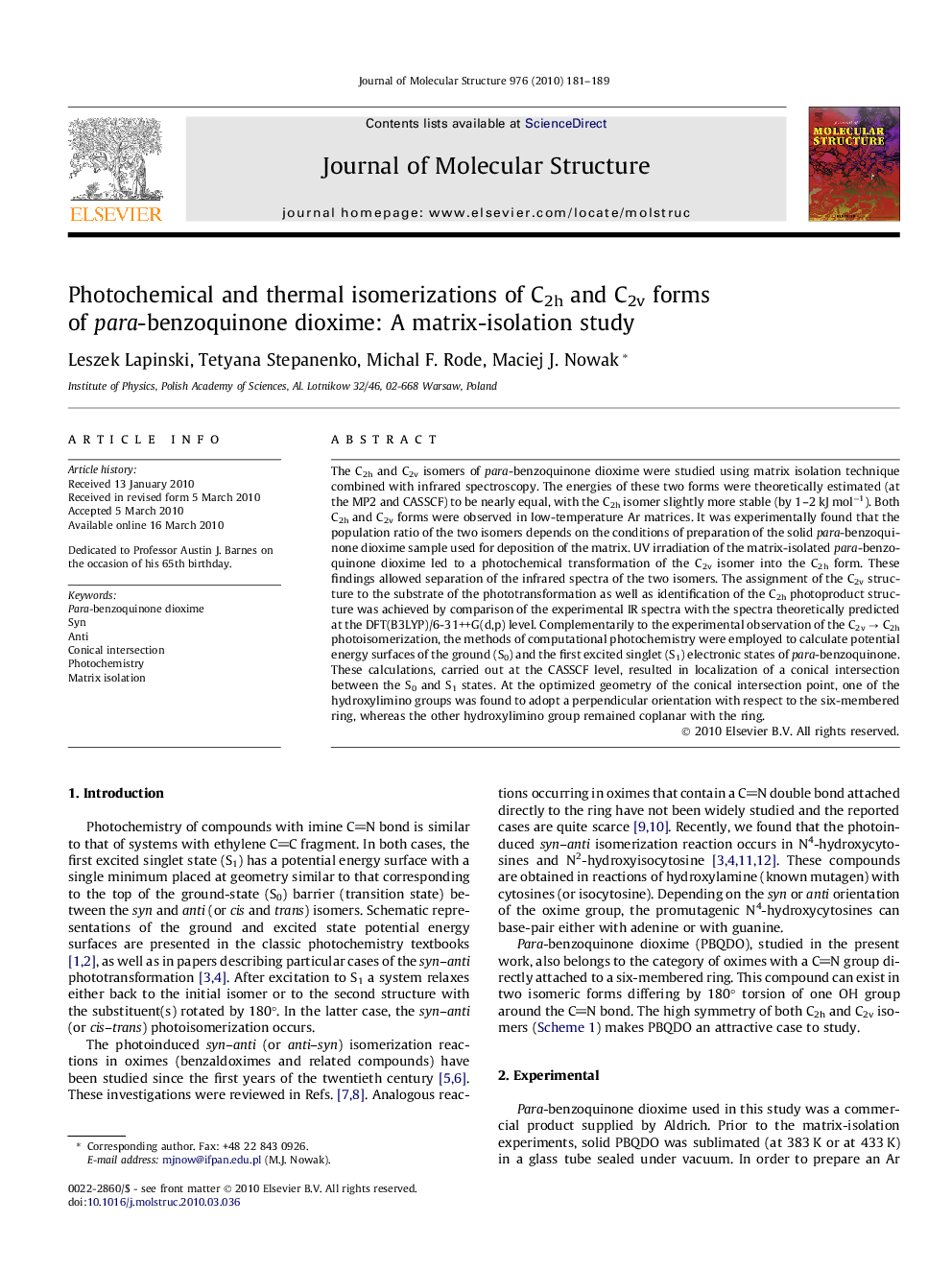| Article ID | Journal | Published Year | Pages | File Type |
|---|---|---|---|---|
| 1410914 | Journal of Molecular Structure | 2010 | 9 Pages |
The C2h and C2v isomers of para-benzoquinone dioxime were studied using matrix isolation technique combined with infrared spectroscopy. The energies of these two forms were theoretically estimated (at the MP2 and CASSCF) to be nearly equal, with the C2h isomer slightly more stable (by 1–2 kJ mol−1). Both C2h and C2v forms were observed in low-temperature Ar matrices. It was experimentally found that the population ratio of the two isomers depends on the conditions of preparation of the solid para-benzoquinone dioxime sample used for deposition of the matrix. UV irradiation of the matrix-isolated para-benzoquinone dioxime led to a photochemical transformation of the C2v isomer into the C2h form. These findings allowed separation of the infrared spectra of the two isomers. The assignment of the C2v structure to the substrate of the phototransformation as well as identification of the C2h photoproduct structure was achieved by comparison of the experimental IR spectra with the spectra theoretically predicted at the DFT(B3LYP)/6-31++G(d,p) level. Complementarily to the experimental observation of the C2v → C2h photoisomerization, the methods of computational photochemistry were employed to calculate potential energy surfaces of the ground (S0) and the first excited singlet (S1) electronic states of para-benzoquinone. These calculations, carried out at the CASSCF level, resulted in localization of a conical intersection between the S0 and S1 states. At the optimized geometry of the conical intersection point, one of the hydroxylimino groups was found to adopt a perpendicular orientation with respect to the six-membered ring, whereas the other hydroxylimino group remained coplanar with the ring.
